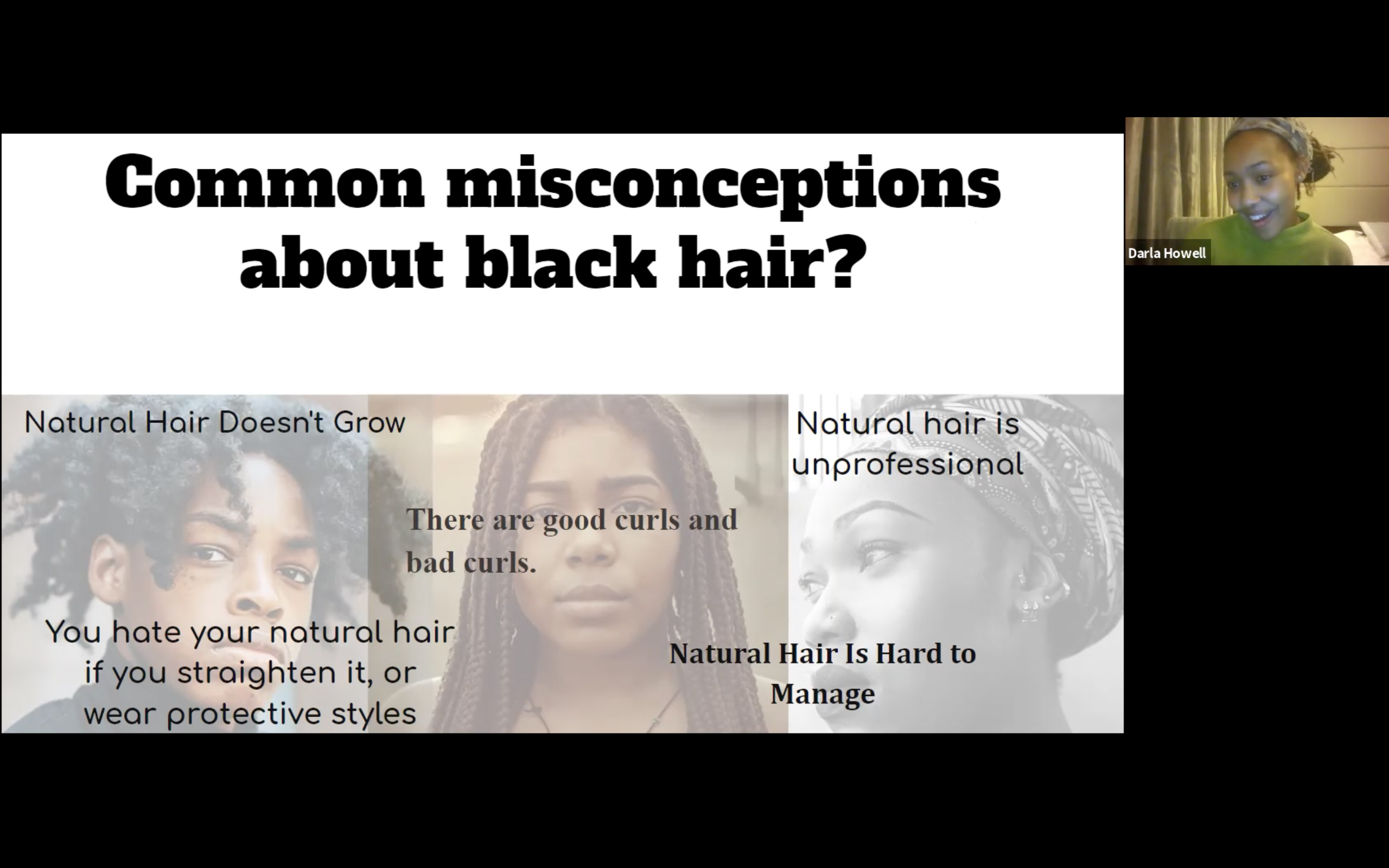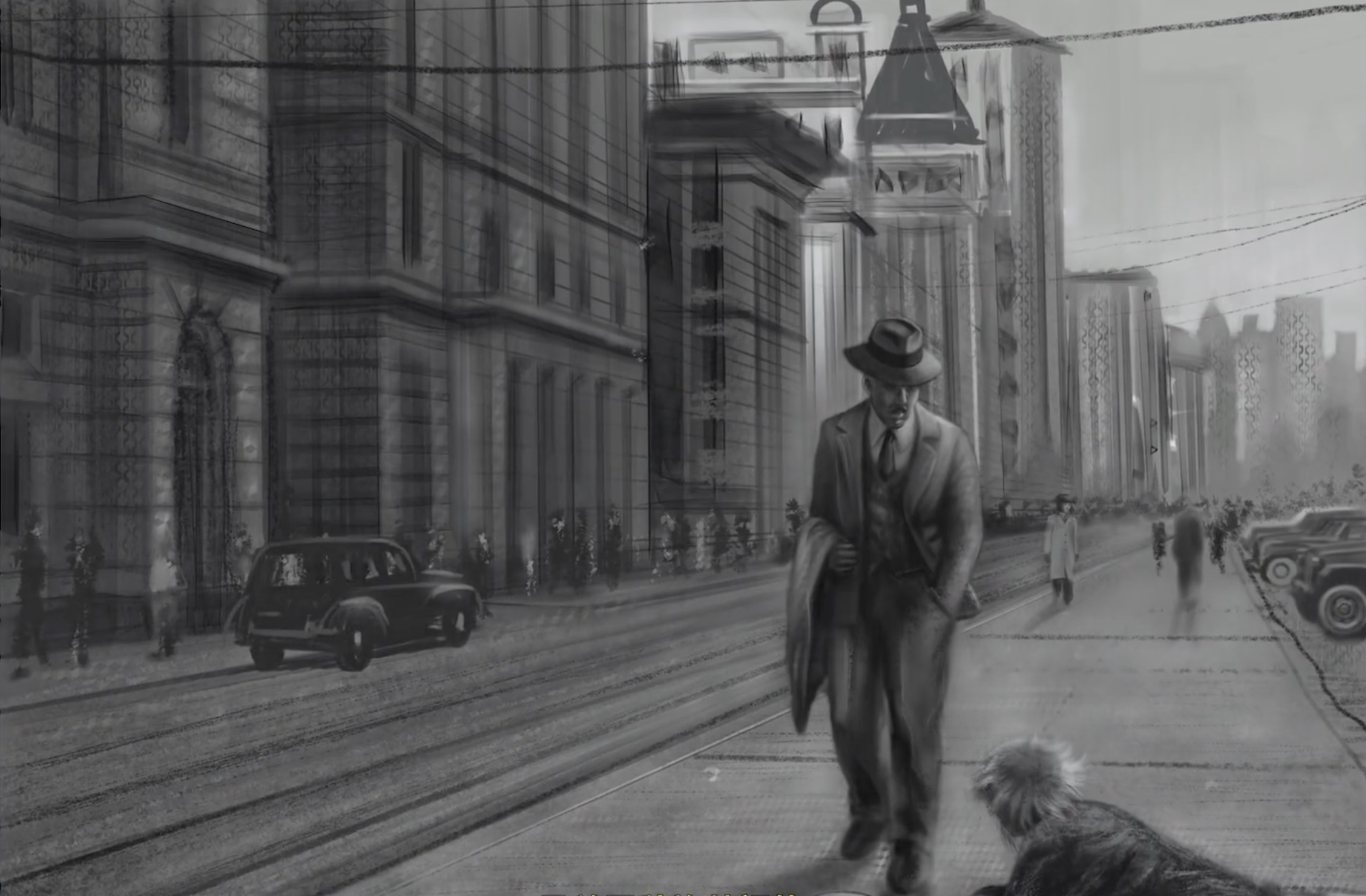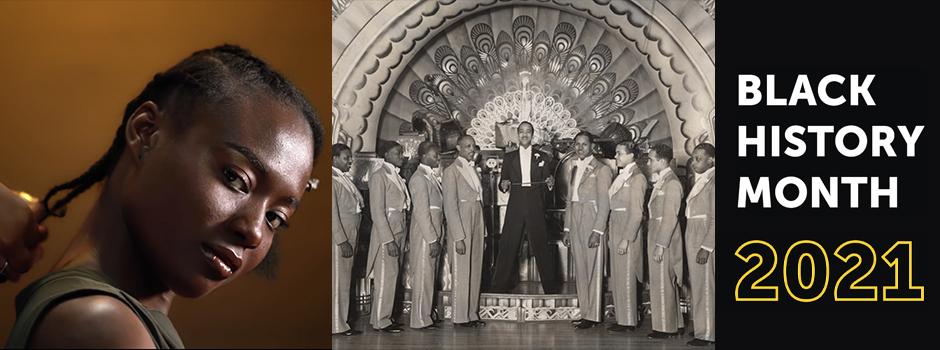Title photo, from left to right: Braids were essential to many enslaved Africans’ survival (from Crowned Ladies, “The History of Black Women’s Hair,” YouTube); In the mid-1930s, Buck Clayton and and his Harlem Gentlemen were the resident band at the Canidrome Ballroom Stage in Shanghai near present-day People's Square (from the Wilbur “Buck” Clayton Collection, LaBudde Special Collections, University of Missouri-Kansas City Libraries).
NYU Shanghai marked Black History Month this February with a series of student-led events celebrating the diversity of Black identity and culture at the university and exploring the long legacy of Black multiculturalism.
Starting with a film screening and trivia party and culminating with a live performance and interactive lecture on Shanghai’s role in Jazz history, the events explored the vast range of Black experiences around the world. Whether the topic at hand was the social media phenomenon of “Blackfishing,” the joys and tribulations of having Black hair, or the legacy of Black jazz musicians in contemporary Asian and world culture, conversations centered on supporting Black-identifying community members and sharing Black experiences with allies across the campus and throughout the university’s global network.
“What’s so unique about NYU Shanghai is that Black students and people of the Black diaspora at this school are from so many different areas of the world, and Blackness manifests here in so many different ways that people where I’m from, in America, don’t really see,” said NYU Shanghai Black Student Association (BSA) Treasurer Isaac Schlager ’21, who organized this month’s events with his BSA co-founders and with the support of NYU Shanghai’s Humanities Program. “Our main goal for Black History month is to welcome people into our space to celebrate what’s beautiful about our different cultures and identities.”
Schlager and classmates Chelsea McLean ’22, Chris Johnson ’21, and Chelsea Polanco ’21 launched the Black Student Association to provide a place of support for their fellow students in the wake of the killings of George Floyd and Breonna Taylor last year, which sparked worldwide protests calling for an end to systemic violence against Black people.
“After the death of George Floyd, I had Chinese friends and members of this community asking me what is going on and genuinely wanting to have a serious conversation about race and the systemic oppression that Black people feel around the world,” Schlager said.
“So we wanted to create a community where Black people at NYU Shanghai can feel comfortable and can share one another’s experiences, and where we can take control of our own narratives. We also really want to provide a space where non-Black people who are curious about the Black experience can ask questions that they maybe have been too scared to ask before.”
The BSA’s emphasis on creating safe spaces for dialogue was borne out in the tone of the events, which were held primarily online to allow access for community members who are still located outside of Shanghai due to the pandemic. The finale event will be held both online and in-person from the Century Avenue campus’s auditorium, with live performances of eight jazz classics by NYU Shanghai’s Jazz Ensemble (led by Clinical Assistant Professor of Arts Murray James Morrison on alto and tenor saxophone) and a discussion with Senior Lecturer David Perry and Titus Levi, Associate Professor at the University of Southern California - Shanghai Jiaotong University Institute of Culture and Creative Industry.
Check out highlights from each event below!

Can you recite the chorus to Kendrick Lamar’s “Money Trees”? Or did you know that Halle Berry, who Lamar references in “Money Trees,” is the first and only woman of color to be awarded an Oscar for Best Actress (for “Monster’s Ball,” 2002)? Monday’s trivia mixer explored the depth and breadth of Black contributions to society, politics, and culture while helping students connect with each other, as well as with faculty and staff mentors and allies.

Did you know that centuries ago, during the colonial-era slave trade, Africans hid rice, seeds, and gold in their braids to sustain and protect themselves during their forced journey across the Atlantic? Global Writing and Speaking Fellow Darla Howell introduced students to hard-to-find resources for Black hair care in Shanghai and led a conversation about how Black and mixed-race individuals navigate the complex history of Black hair and its cultural connotations.
"Hearing stories of dealing with Black hair and learning about misconceptions of it was especially interesting to me because I grew up hearing these misconceptions in my Hispanic household. There were always 'bad curls' and 'good curls,'" said Sydney Fontalvo '21 of Hasbrouck Heights, New Jersey.
"You cannot speak on Black history without Black hair being intertwined, and since our school is very diverse, it’s really important to show the diversity in Black hair as well. People may only associate one hair type or style with Blackness or have many misconceptions about Black hair, so these stories are crucial to individuals who may not understand the history embedded in every lock, curl, and braid."

When does cultural appreciation become cultural appropriation? Faculty, staff, and student panelists each talked about their own personal understanding of “Blackfishing,” the social media phenomenon in which people alter their clothing, hair, skin, facial features, posture, and even their language to try to appear Black or racially ambiguous.
“Hearing about the different ways of cultural appropriation present in today’s society was really surprising,” said Bisera Alchevska ’22 of North Macedonia. “For example, before the panelists spoke about the use of gifs on social media and how those are tied with cultural appropriation, I hadn’t considered that, so I’m glad they made me aware of it,” said Bisera Alchevska ’22 of North Macedonia.

2020 was a tough year, and sometimes it can be hard to stay positive when we consider the long and arduous journey toward justice and equality. Together with Student Health and Wellness, the BSA offered an open meditation session aimed at helping students find the focus and inner peace needed to overcome trials and tribulations.

Langston Hughes visited Shanghai in 1933, where he was shocked by Europeans’ poor treatment of the Chinese in their own country. Illustration by Antonio Sevilla, from the video “Known Rivers Episode 3: Langston Hughes ‘St. Petersburg to Shanghai’” by Aaliyah Bilal.
How did institutionalized racism and the technology of colonization power make Jazz music a driving force in the development of modern Asian popular music? And how did renowned Black American author and poet Langston Hughes end up having the most delicious fried chicken dinner of his life in Shanghai? Take a deep dive into Shanghai’s illustrious Jazz legacy with performances by NYU Shanghai’s Jazz Ensemble, video by writer Aaliyah Bilal, and a conversation led by Senior Lecturer David Perry and Titus Levi, Associate Professor at the University of Southern California - Shanghai Jiaotong University Institute of Culture and Creative Industry.


